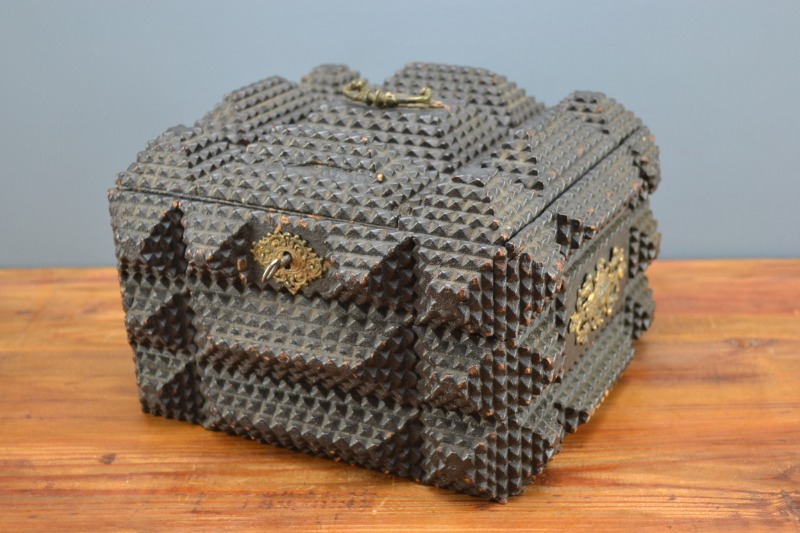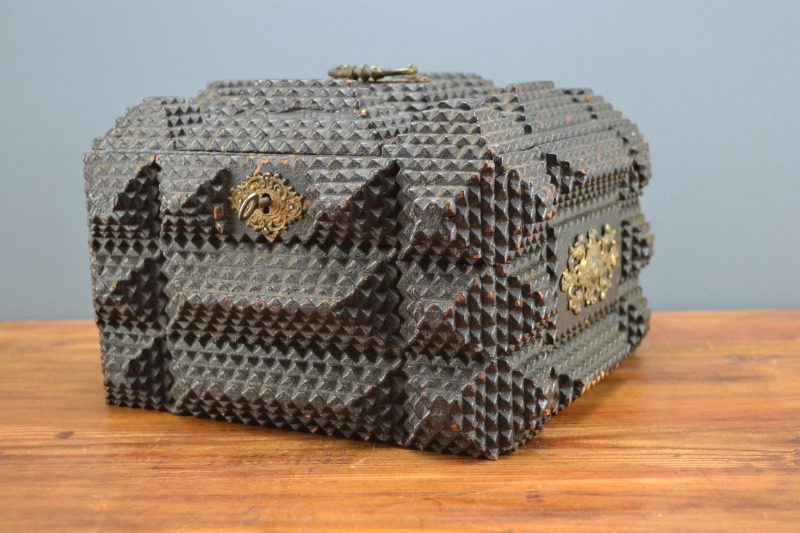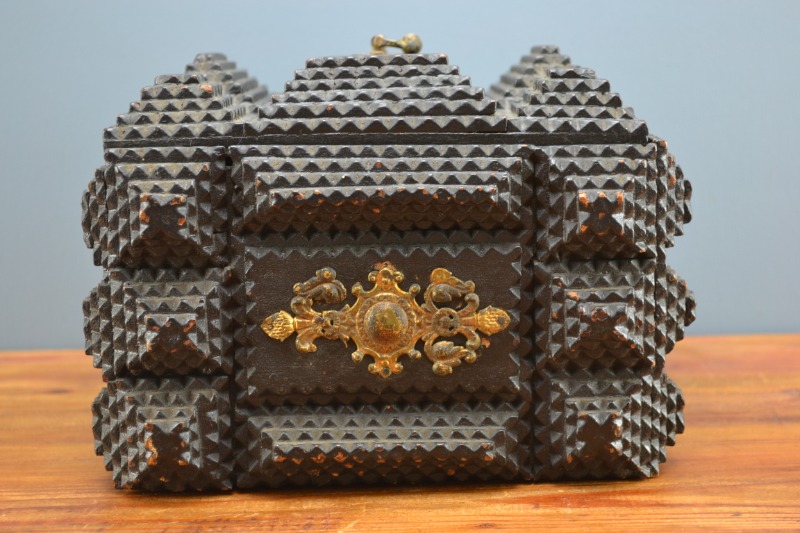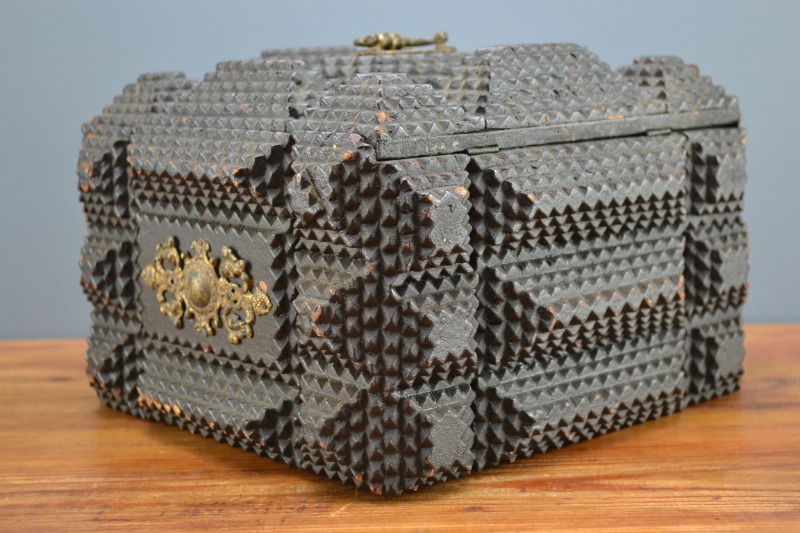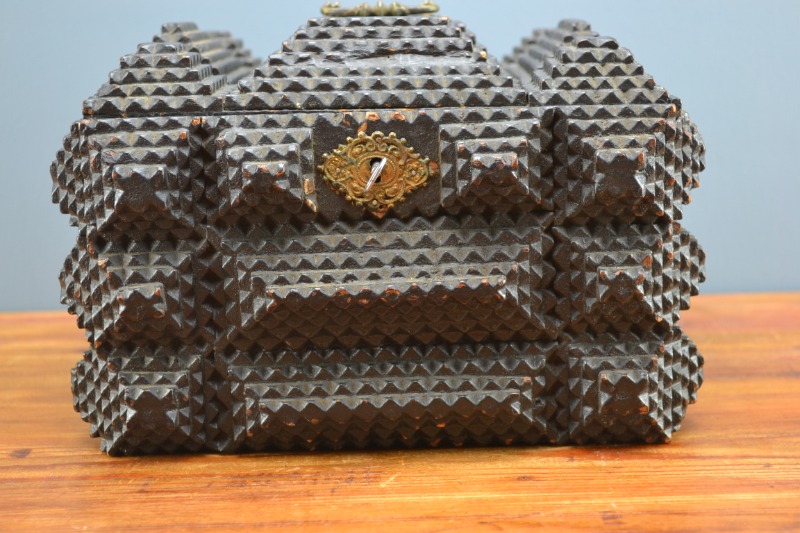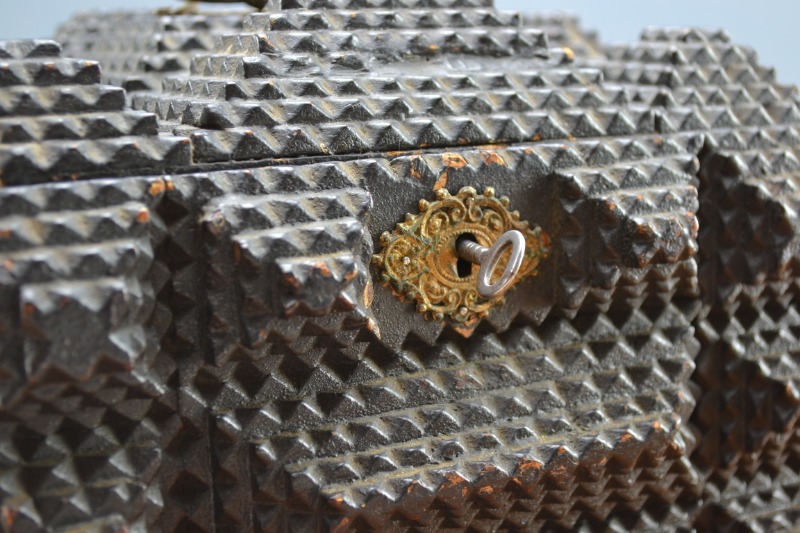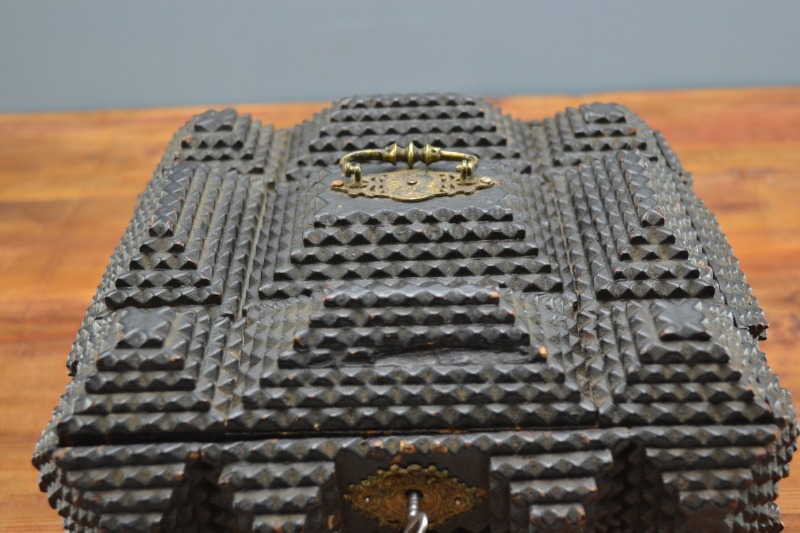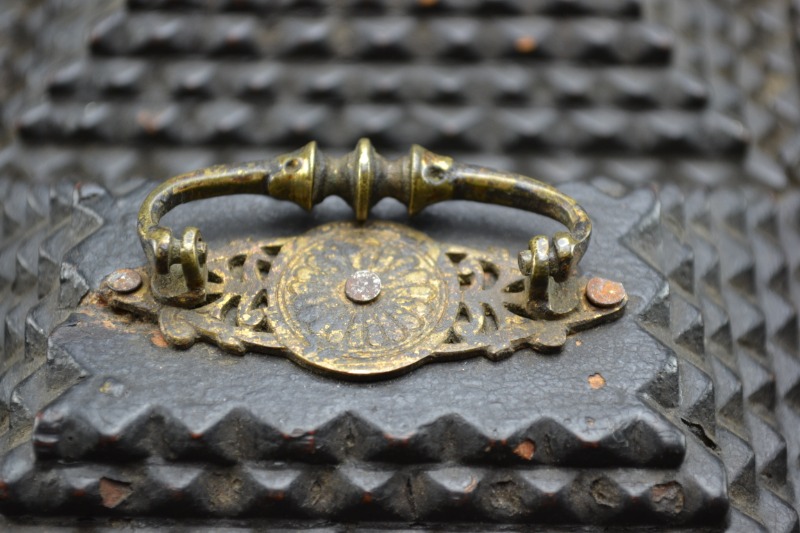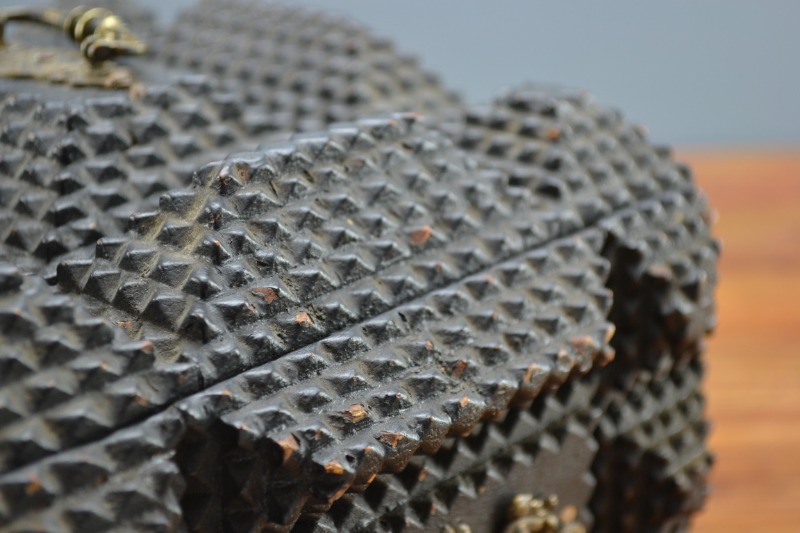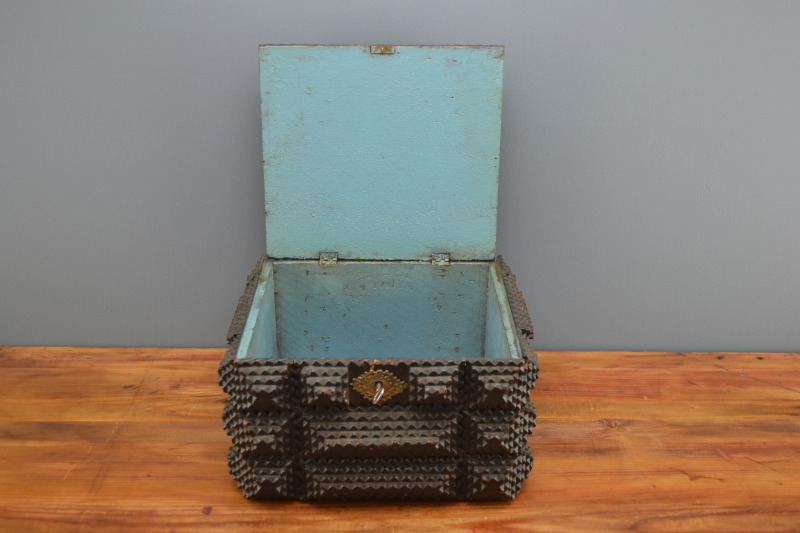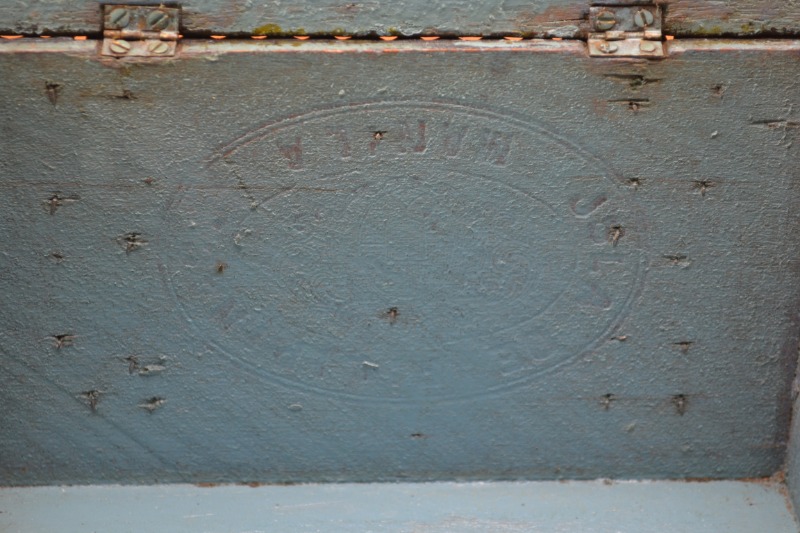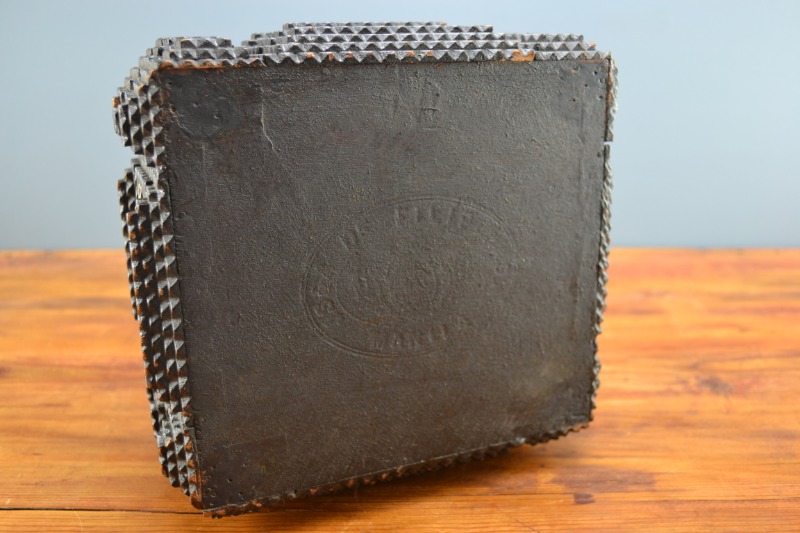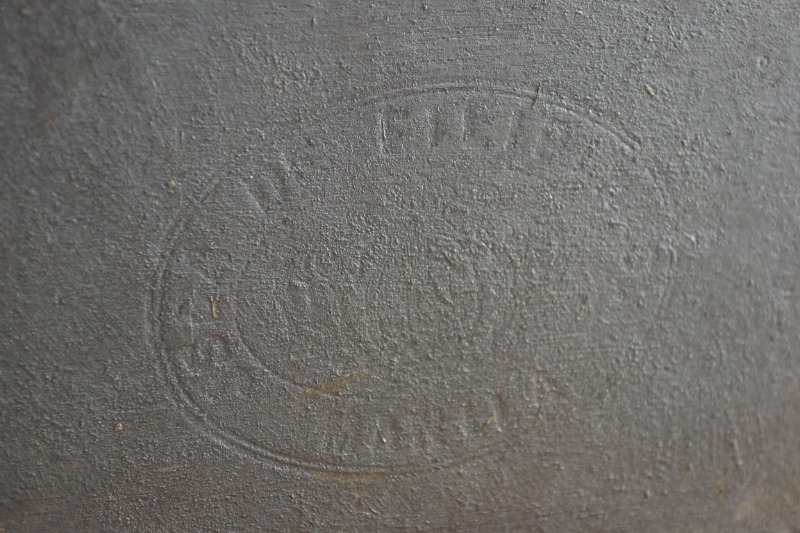Victorian European Tramp Art Box, c. 1880
Age:
c. 1880
Material:
Wood
Dimensions:
23.5 x 23.5 x 15
Shipping:
Standard Parcel
Price:
SOLD
This is a fine example of a 19th century Tramp Art box with pyramid shapes and ornate brass work. It retains its original black paint which has softened with age and reveals glimpses of the wood beneath. It has a working lock and key and the top lifts up to reveal the original blue painted interior.
The box has been made out of old cigar boxes. Islas de Filipinas Manila is stamped both on the inside and on the bottom of the box. This dates it to before the Philippine Revolution in 1896 when the islands were declared the República Filipina. After the Spanish–American War (1898), American colonial authorities referred to the country as the Philippine Islands.
Tobacco was introduced to the Philippines by the Spanish conquistadores when back in 1592, the galleon San Clemente brought in 50 kilograms of Cuban tobacco seeds. Philippine-made cigars, also known as Manila cigars, were celebrated in Europe’s smoking salons as early as the 17th century. The tobacco assumed the proportions of an industry around 1780 and became so lucrative a cash crop that a “Tobacco Monopoly” was established from 1780 to 1881 to maximize revenue.
"Tramp work" was a term first used in a 1959 article by Frances Lichten in Pennsylvania Folklife to describe crafts constructed from waste materials such as discarded cigar boxes and assembled with a penknife. The chip carving consisted of notching and layering, with each succeeding layer being a little smaller than the preceding one, to create a pyramidal design. The art form seems to have originated in both Europe and the US at the same time. European Tramp Art is differentiated by its use of brass ornament.

